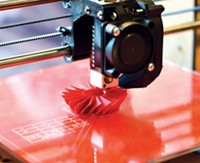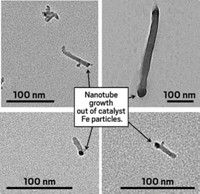Advertisement
Grab your lab coat. Let's get started
Welcome!
Welcome!
Create an account below to get 6 C&EN articles per month, receive newsletters and more - all free.
It seems this is your first time logging in online. Please enter the following information to continue.
As an ACS member you automatically get access to this site. All we need is few more details to create your reading experience.
Not you? Sign in with a different account.
Not you? Sign in with a different account.
ERROR 1
ERROR 1
ERROR 2
ERROR 2
ERROR 2
ERROR 2
ERROR 2
Password and Confirm password must match.
If you have an ACS member number, please enter it here so we can link this account to your membership. (optional)
ERROR 2
ACS values your privacy. By submitting your information, you are gaining access to C&EN and subscribing to our weekly newsletter. We use the information you provide to make your reading experience better, and we will never sell your data to third party members.
Environment
Office Printers Emit Ultrafine Particulates
Toner particles from laser printers found in air
by Rachel Petkewich
August 1, 2007

Office workers now have reason to think twice before printing out that report the boss is waiting for. In a recent office study, researchers in Australia found that nearly one-third of laser printers emitted high levels of nanoparticles into the air, and on average, particle counts during working hours were five times higher than during nonwork hours (Environ. Sci. Technol., DOI: 10.1021/es063049z.). Inhaling these ultrafine particles may pose a health hazard, experts caution.
Lidia Morawska and Congrong He at the Queensland University of Technology and Len Taplin at the Queensland Department of Public Works, both in Brisbane, set out to examine the efficiency of ventilation systems in protecting offices from outdoor pollution. But they determined that the ultrafine particles they were detecting originated indoors from the laser printers, which use dry toner, as opposed to ink-jet printers, which use liquid ink. Dry toner consists of particulate matter, some of which is released into the air when it is heat-transferred to paper to form an image.
Morawska says they did not investigate the chemical composition of the particles, but plan follow-up studies. She suspects toner is directly released into the air rather than producing secondary particles.
"Studying the sources of indoor air pollution, including particle emissions from office equipment such as printers, is important in understanding their contributions to pollutant loads, assessing potential health risks, and moving to risk-reduction techniques," says Marilyn Black, chief scientist and CEO of the indoor air testing and consulting firm Air Quality Sciences, in Marietta, Ga.
Previous studies by other researchers focused on emissions of volatile organic compounds, ozone, and total particles from office printers and copiers, but not submicrometer particles.
Natural gas stoves and clothes dryers are the only other indoor sources reported to directly emit substantial amounts of ultrafine particles, says Lynn Hildemann, an associate professor at Stanford University who specializes in sources and composition of airborne particles.
The new results imply that levels of submicrometer particles in an office can be reduced by judicious choice of printers, the researchers suggest.
Morawska and colleagues monitored popular printer models sold internationally under the Canon, HP Laserjet, Ricoh, and Toshiba brand names. They classified 62 printers into four categories. Thirty-seven of the printers did not emit particles. Six printers released low levels, and two demonstrated medium levels. Seventeen printers—many capable of color printing—emitted high levels.
Laboratory studies of three printers in isolated chambers demonstrated that particle size and emission rates varied by printer model and age. In addition, more particles are emitted by older toner cartridges and during print jobs that require more toner per page.





Join the conversation
Contact the reporter
Submit a Letter to the Editor for publication
Engage with us on Twitter